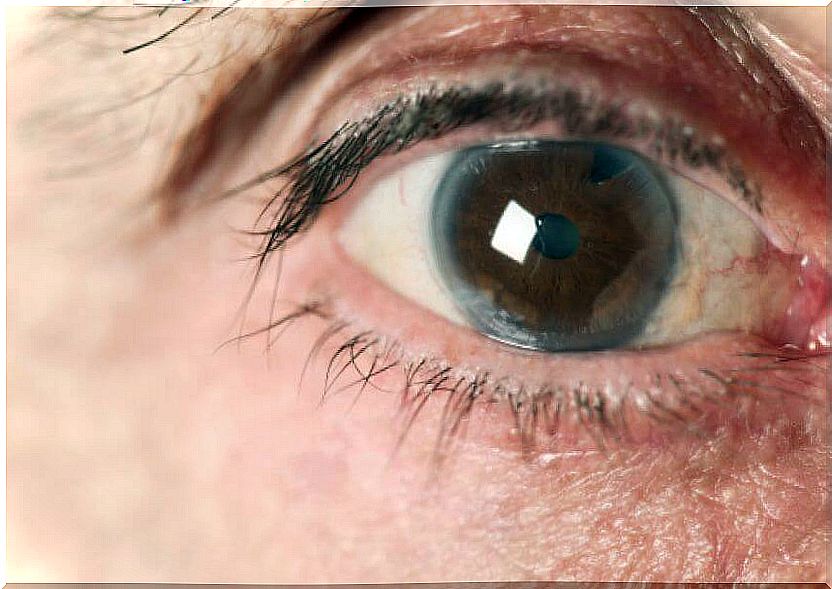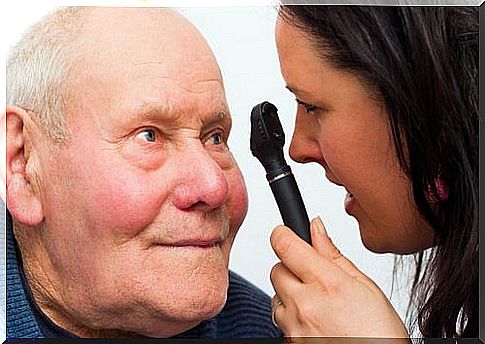Main Causes Of Glaucoma
Glaucoma is a serious eye disease that gradually decreases vision. If not treated properly, it can lead to blindness. The main causes of glaucoma have to do with a deficiency in the drainage channels of the eye.
Anyone, at any age, is susceptible to developing ocular glaucoma. However, it is more common in people over 60 years of age. There are also some genetic criteria that predispose to developing this disease.
The causes of glaucoma have nothing to do with “straining your eyes too much,” as is popularly believed. It is also not associated with the use of contact lenses, nor is it contagious. If it is treated in time, it does not lead to blindness.
What is glaucoma

In the front of the eye there is a liquid that is transparent and is called intraocular fluid or aqueous humor. This exits the eye through the pupil. It is then carried into the bloodstream, through a drainage system.
The amount of fluid inside the eye determines the pressure in the eye. If this fluid is produced in proper proportions and the drainage system works well, the pressure in the eye will be normal. This varies throughout the day, but always tends to balance.
When the drainage system is damaged, intraocular fluid builds up and does not pass into the bloodstream. This increases the pressure inside the eye. The consequence of this is that the optic nerve is damaged and vision is lost.
Despite the above, there are also cases in which eye pressure is normal and glaucoma is still present. Science has not fully elucidated why this occurs. It is also not clear why the eye’s drainage system is damaged.
The characteristics of glaucoma
Glaucoma is usually present in both eyes. However, it is also common for it to develop first in one of them. Usually there are no particularly noticeable symptoms. This is why glaucoma is said to be a silent thief of sight.
Common symptoms are: blurred vision, rainbow colored halos around bright lights, headache or eye pain, nausea, vomiting, and sudden loss of vision. More than half of the people who have glaucoma don’t know it.
Glaucoma is more common in people over the age of 40 who are Asian, Hispanic, or African. Also among those who have relatives with glaucoma, have high eye pressure, suffer from diabetes or hypertension or have suffered eye injuries.
Types of glaucoma

There are different types of glaucoma. Depending on the causes, one or another type of this disease develops. The main types of glaucoma are the following :
- Open-angle glaucoma: It is the most common. It is characterized by a slow and gradual increase in pressure in the eye, which leads to damage to the optic nerve.
- Angle-closed: It occurs suddenly and has to do with the anatomy of the eye.
- Secondary glaucoma: It is caused by external causes or by pre-existing eye diseases. It can be open or closed angle.
- Congenital: It is present from birth.
- Normal-tension glaucoma: It is similar to open-angle glaucoma, but in this case there is no elevated pressure in the eye.
Causes of glaucoma
The causes of glaucoma determine the type. We speak of primary glaucomas, when the cause is directly related to the malfunction of the eye drainage. And secondary, if the cause is another. Let’s look at the main causes of glaucoma, according to type:
- The most typical case is open-angle glaucoma. It is caused by increased pressure in the eye and leads to optic nerve damage.
- The anatomy of the eye makes the angle between the iris and the cornea too narrow. This is closed-angle glaucoma, which generates an acute attack, which is a medical emergency.
- Secondary glaucoma is caused by the consumption of steroids, by accumulation of residues in the eye, ocular inflammation or by an injury. Also for cysts or tumors in the eyeball.
- Those that are due to an abnormality in the development of the drainage system of the eye are congenital glaucomas.
- Science ignores the causes of normal-tension glaucoma.
Glaucoma can only be diagnosed by a comprehensive eye exam. It is not detected in a simple optometry check-up. It is currently treatable and curable if it is recognized in time.








